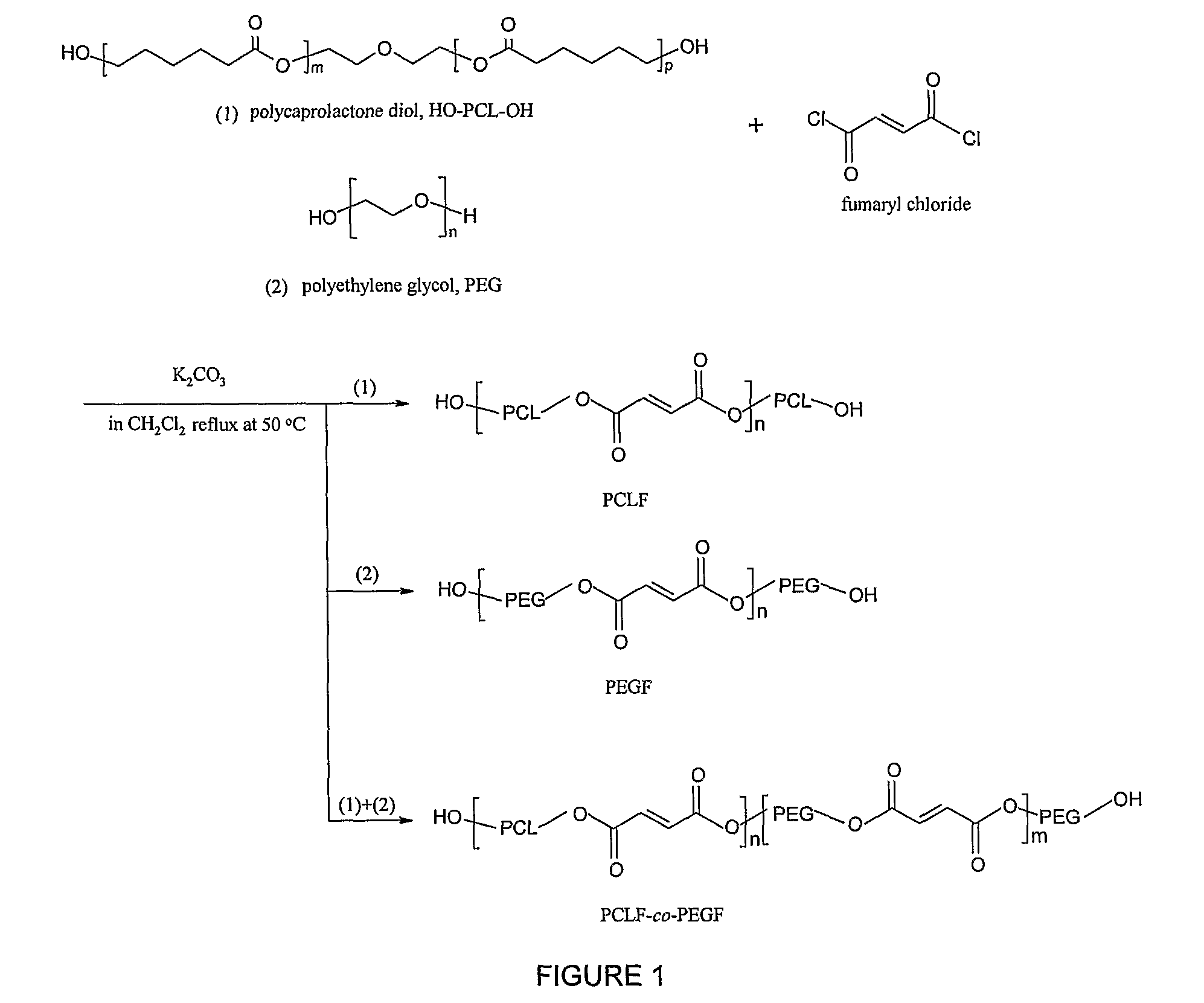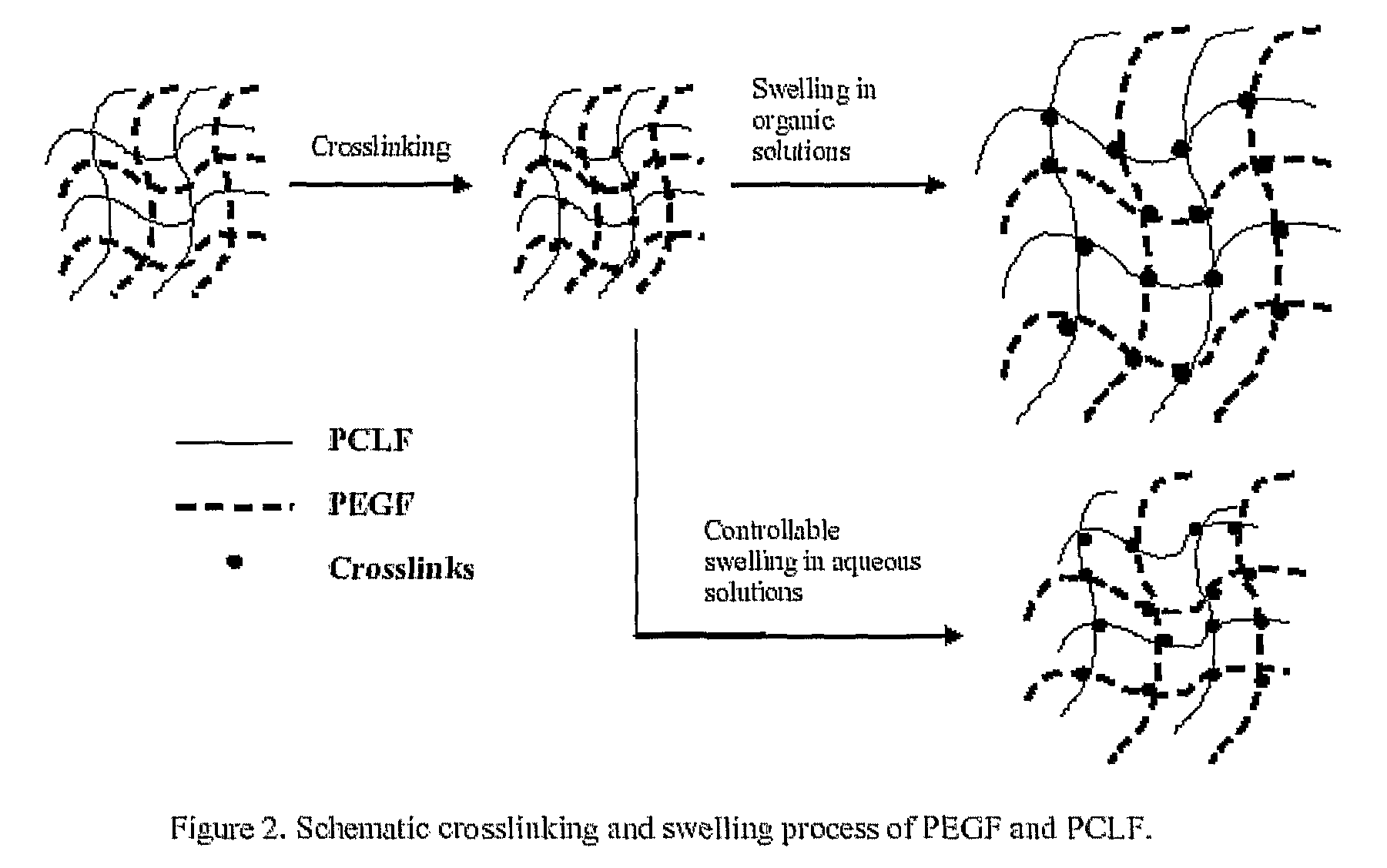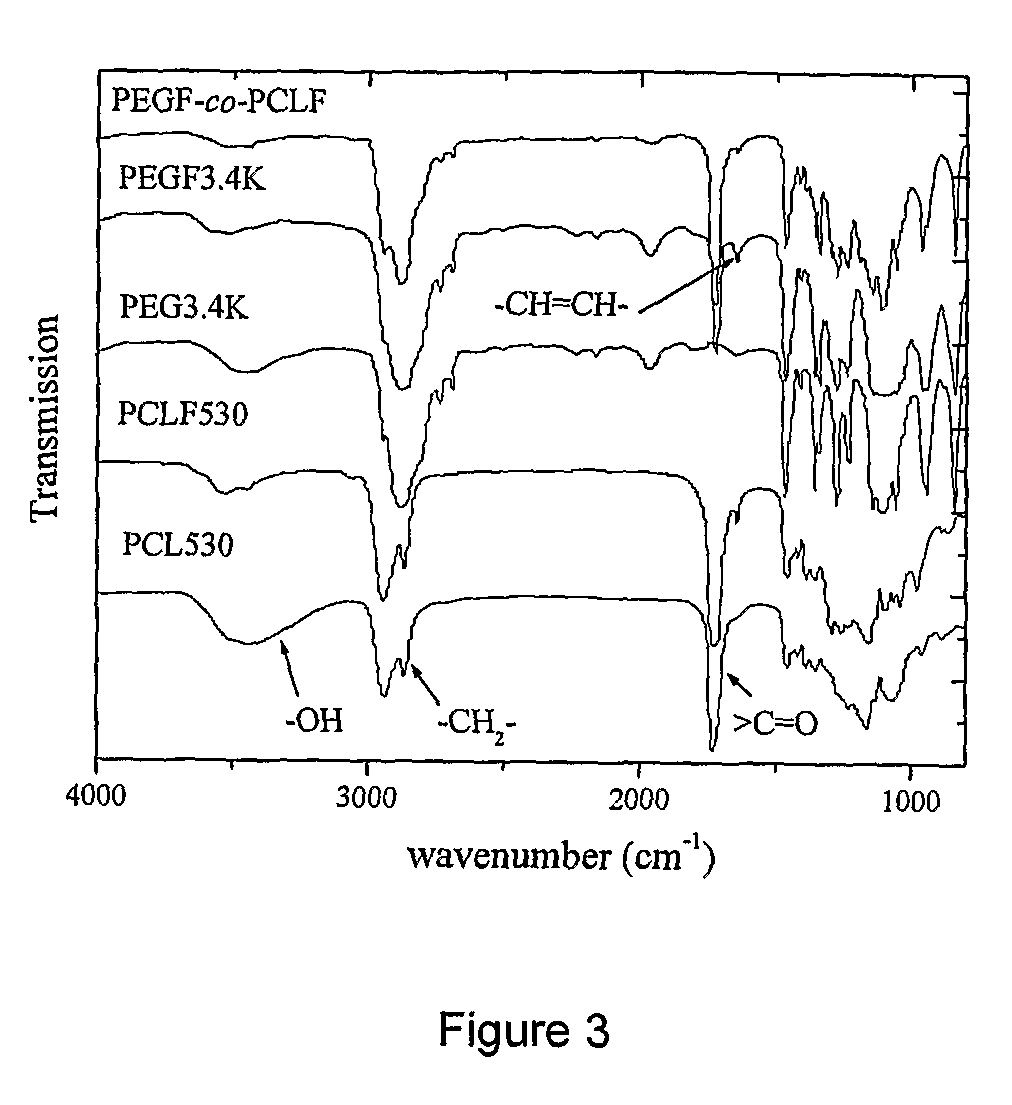Hydrophilic/hydrophobic polymer networks based on poly(caprolactone fumarate), poly(ethylene glycol fumarate), and copolymers thereof
a technology of hydrophobic polymer networks and caprolactone, which is applied in the field of hydrophobic/hydrophobic polymer networks based on poly (caprolactone fumarate), poly (ethylene glycol fumarate), and copolymers thereof, can solve the problems of reducing the rate of graft incorporation compared, limiting the spectrum of cases in which it can be used alone, and the possibility of pathogen transfer from the donor to the host, etc., to achiev
- Summary
- Abstract
- Description
- Claims
- Application Information
AI Technical Summary
Benefits of technology
Problems solved by technology
Method used
Image
Examples
examples
[0047]The following Examples have been presented in order to further illustrate the invention and are not intended to limit the invention in any way.
A. Synthesis of Poly(ethylene glycol fumarate) (PEGF) Macromers
[0048]Poly(ethylene glycol)s (PEGs, Aldrich) were dried by an azeotropic distillation in toluene and then evacuated under reduced pressure to remove residual traces of water. Fumaryl chloride, PEG, and potassium carbonate were measured out in a molar ratio of 1:1:1.5. The polymer density of PEG3.4K is 1.0926 g·cm−3. The PEG was dissolved in methylene chloride (1:2 by volume) and placed in a 2 L three-neck flask along with the powdered potassium carbonate. This mixture was stirred with an overhead mechanical stirrer to form a slurry. Fumaryl chloride dissolved methylene chloride (1:1 volume ratio) was added dropwise to the slurry. The reaction mixture was maintained at 50° C. (by altering the rate of the fumaryl chloride addition) under a nitrogen blanket. Additional fumaryl ...
PUM
| Property | Measurement | Unit |
|---|---|---|
| temperature | aaaaa | aaaaa |
| density | aaaaa | aaaaa |
| volume | aaaaa | aaaaa |
Abstract
Description
Claims
Application Information
 Login to View More
Login to View More - R&D
- Intellectual Property
- Life Sciences
- Materials
- Tech Scout
- Unparalleled Data Quality
- Higher Quality Content
- 60% Fewer Hallucinations
Browse by: Latest US Patents, China's latest patents, Technical Efficacy Thesaurus, Application Domain, Technology Topic, Popular Technical Reports.
© 2025 PatSnap. All rights reserved.Legal|Privacy policy|Modern Slavery Act Transparency Statement|Sitemap|About US| Contact US: help@patsnap.com



